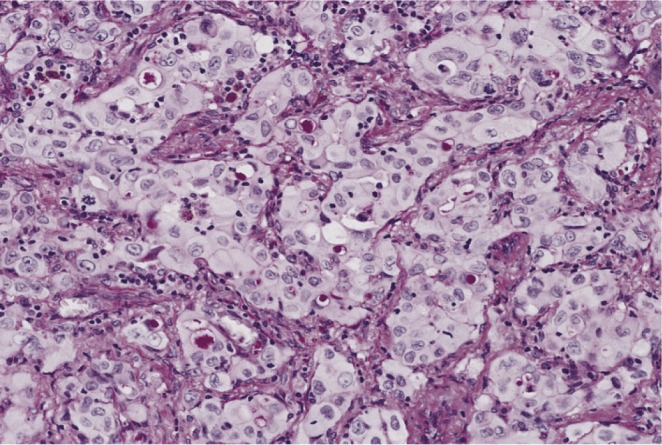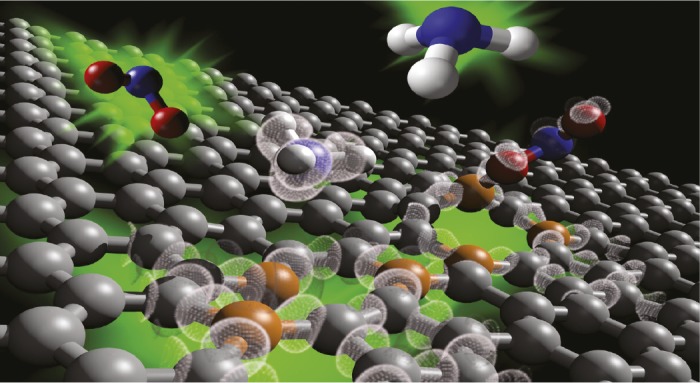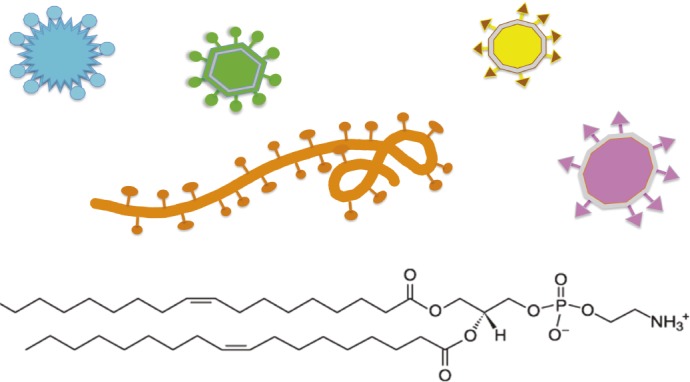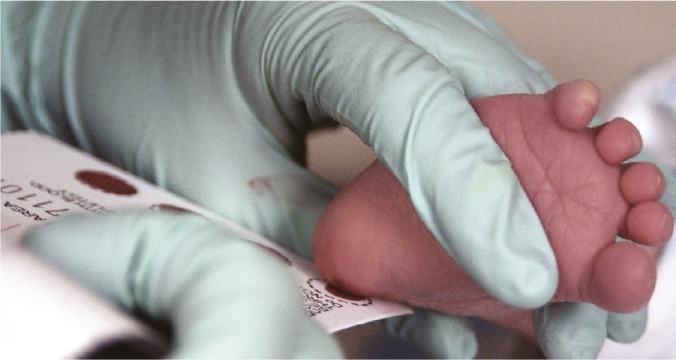Birth of babies through round spermatid injection

Baby born through ROSI.
Men incapable of producing mature spermatozoa are often pronounced sterile and advised to consider donor sperm. Though round spermatids, which are 6–8 μm spheres that appear early in sperm development and give rise to mature sperm, have been used to trigger successful human pregnancies, the safety and efficacy of this experimental practice, called round spermatid injection (ROSI), remain unclear. Atsushi Tanaka et al. (pp. 14629–14634) used electric current to stimulate oocytes extracted from 76 women and performed ROSI using round spermatids isolated from the seminiferous tubules of the women’s partners, who were 22–46 years of age. Twelve of these women gave birth to a total of 14 healthy infants between September 2011 and March 2014. The authors report that to date the children show no signs of physical or mental deficiencies, or genetic disorders associated with artificial reproduction. Transfer of ROSI-derived embryos that were kept frozen until the women resumed normal ovulation increased pregnancy and delivery rates. Though ROSI might help some men whose sperm are arrested at the round spermatid stage father their own genetic offspring, further studies are required to establish the clinical value of ROSI, which is less efficient than well-established methods such as in vitro fertilization or intracytoplasmic sperm injection, according to the authors. — P.N.
Role of ephrin receptor in lung cancer

Lung adenocarcinoma. Image courtesy of the Armed Forces Institute of Pathology.
The Cancer Genome Atlas (TCGA), a consortium to map cancer-associated genetic alterations, has uncovered many mutations and copy number changes in patients with lung adenocarcinoma, a malignant type of non-small cell lung cancer. However, the precise roles of these changes in lung cancer remain unclear. Narayana Yeddula et al. (pp. E6476–E6485) used a high-throughput genetic screen based on short hairpin RNA (shRNA) molecules to test the roles of such genetic changes in tumor suppression in mouse models. Using shRNAs targeting more than 4,700 cellular signaling genes, the authors identified, among others, the signaling enzyme Ephrin receptor A2 (EphA2) as a tumor suppressor in lung adenocarcinoma cells with a missense mutation in Kirsten rat sarcoma viral oncogene homolog (KRas), an oncogene that drives the cancer. Genetic alterations of EphA2 were detected in 54 out of 230 patients with lung adenocarcinoma. Loss or decline of EphA2 activated several growth-associated signaling and gene expression pathways, namely the ERK1/2 and Hedgehog pathways, boosted cell proliferation, and promoted tumor growth in mouse lungs. Importantly, activating EphA2 using its ligand suppressed both ERK1/2 signaling and cell proliferation, suggesting that the enzyme might serve as a potential drug target in KRas-dependent lung adenocarcinoma. According to the authors, the shRNA-mediated screen can be used to identify and validate the roles of other cancer-related mutations uncovered in TCGA and similar projects. — P.N.
Sensing low toxic gas concentrations

Boron doping enhances graphene’s sensitivity as a gas detector.
The one carbon atom–thick nanomaterial known as graphene exhibits a well-known set of exotic properties. Because interactions with gas molecules change graphene’s conductivity, this incredibly strong and flexible material would seemingly make an ideal gas sensor. However, these interactions are often weak and too similar to differentiate between different gas species, limiting the scope of this otherwise promising application. Ruitao Lv et al. (pp. 14527–14532) examined boron doping as a means to improve graphene’s gas sensing capabilities and devised a technique to grow large-area, high-crystallinity boron–graphene sheets with triethylborane/hexane precursor solutions and a copper foil substrate. A well-established technique in material sciences, doping enhances the conductivity of pure semiconductor materials such as graphene by introducing additional charge carriers into the material. The authors imaged the atomic structure of the boron–graphene composite with scanning tunneling microscopy to confirm that the boron impurities act as p-type dopants, a type of positively charged carrier. In addition, the authors also show that the enhanced chemical reactivity and selectivity in boron-doped graphene enables sensing of toxic gases such as nitrogen dioxide and ammonia at extremely low concentrations. — T.J.
Viruses use key cellular lipids to enter cells

Viruses hijack PE (Bottom), a basic component of cell membranes, to enter cells.
Ebola virus (EBOV), dengue virus (DENV), West Nile virus (WNV), and many other viruses employ a common strategy to aid their spread within the host: The viral membrane displays the lipid phosphatidylserine (PS), which appears on the outer leaflet of the host cell membrane after the cell enters apoptosis. Phagocytic cells that express members of the T-cell Ig mucin domain protein 1 (TIM) family of PS receptors take up the virus and thus spread infection. To explore the role of another lipid, phosphatidylethanolamine (PE), in this process, Audrey Richard et al. (pp. 14682–14687) analyzed the binding of various human PS receptors, including TIM proteins, to phospholipids. TIM1 bound to PE and PS with similar efficiencies. When the authors preincubated EBOV, DENV, WNV, or virus-like particles with Duramycin, a small lantibiotic that specifically binds to PE but not PS, infection of TIM1-expressing cells was inhibited. In contrast, Duramycin failed to inhibit infection of the same target cells by viruses that do not use TIM1 for entry. According to the authors, PE, which is more abundant than PS, may be a promising target for broad-spectrum antiviral therapies targeting EBOV, DENV, and WNV, all of which are life-threatening pathogens with no approved treatments or licensed vaccines. — C.B.
Unraveling human genome packaging
Housed in a nucleus only a few microns wide, the human genome, roughly 2 m long, is folded into loops and contact domains of chromatin, which composes chromosomes. Advances in high-throughput techniques have helped unravel genome architecture. Building on an existing 3D map of the human genome annotated with around 9,000 contact domains and 10,000 loops, Adrian Sanborn et al. (pp. E6456–E6465) evaluated theoretical models for the formation of these chromatin structures. The analysis suggests that an extrusion model, previously proposed to explain loop formation during a stage of cell division called metaphase, closely comports with simulation data from high-resolution spatial maps of chromosomes at the interphase stage. In the model, a complex composed of the DNA-binding proteins CCCTC-binding factor (CTCF) and cohesin is thought to extrude loops as the two proteins slide in opposite directions along chromatin. The model explains not only why loops are unknotted and nonoverlapping but also why they tend to lie between CTCF-binding motifs that are oriented facing each other. Editing the CTCF-binding motifs found at the loop anchors—including insertion of even a single base pair—reengineered loops and contact domains, and the model accurately predicted the positions of loops and domains using only information about CTCF-binding sites in human cells. According to the authors, genome editing can help probe and alter how the human genome is folded. — P.N.
Noninvasive prenatal genetic testing

Sequencing fetal DNA in maternal plasma can help detect subchromosomal abnormalities. Image courtesy of Eric T. Sheler (US Air Force).
Noninvasive prenatal testing (NIPT) uses sequencing of fetal DNA in maternal blood plasma to screen for an abnormal number of fetal chromosomes. Ai-hua Yin et al. (pp. 14670–14675) evaluated whether NIPT could also detect DNA duplications or deletions within fetal chromosomes. The authors sequenced maternal plasma collected from 1,476 pregnant women whose ultrasounds indicated fetal structural abnormalities. DNA duplications and deletions detected by NIPT were compared to the abnormalities detected in fetal DNA collected from the same women using an invasive procedure. The authors detected 78 deletions and duplications in invasively collected fetal DNA, and 56 of these were also detected by sequencing maternal plasma DNA, yielding a sensitivity of 71.8%. For abnormalities larger than 1 million bp, the sensitivity improved to 94% with increased sequencing depth. The maternal plasma sequencing also produced 58 false positives, 35 of which were found to be caused by duplications or deletions in the maternal DNA, instead of fetal DNA. Hence, a follow-up test might be necessary to rule out maternal DNA abnormalities before making a diagnosis based on NIPT. These results suggest that NIPT can be extended to detect fetal DNA deletions and duplications, and the authors suggest that a similar method might be used to detect cancer by detection of circulating tumor DNA. — B.D.


